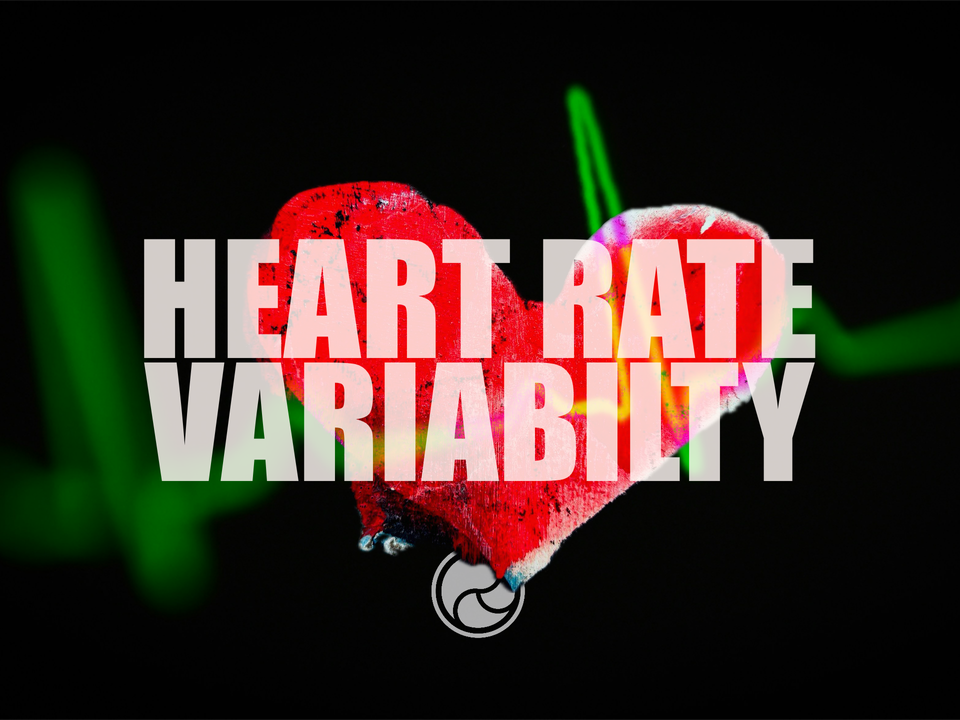Heart Rate Variability

This is a break-out of an article I wrote years ago titled "Heart Rate Variability: Finding the Pulse on Your Recovery." The entirety of this prior article has been broken up and spread out for ease of consumption, and will serve as a sample of content that will be produced for this publication. This content is provided for free, and as such, will be foundational in understanding what comes later on. Enjoy!
Heart Rate Variability: Gauging Your Physical Wellbeing
Part 1: The Anatomical Heart
Part 2: Autonomic Regulation of the Heart: Pumping the Brakes, Hitting the Gas
Part 3: Respiratory Sinus Arrhythmia: What's Breath Got to Do With it?
Part 4: Heart Rate Variability: Effectively Gauging Your Physical Wellbeing (this article)
Contents
What is Heart Rate Variability?
The Reactivity Hypothesis
The Training Edge
“And now here is my secret, a very simple secret: It is only with the heart that one can see rightly; what is essential is invisible to the eye.”
― Antoine de Saint-Exupéry, The Little Prince
Everything that has been published here prior–a whopping three whole articles–has been written to help explain Heart Rate Variability (HRV) with some depth. I argue that just knowing about HRV is not enough; knowing the underlying mechanisms that contribute to HRV will help you harness this to your benefit. If you have not read the prior pieces in this series, I strongly recommend you do so before continuing further as they explain basic anatomy and physiology that will not be explained here.
What is Heart Rate Variability?
Simply stated, HRV is the average measurement of the variability of timing between each heart beat. Seems simple enough, but why all the fuss about how this works? Let's pull it back just a little bit:
Your heart does not beat at a consistent, perfectly timed, tempo. When you take a heart rate measurement, you may come to the conclusion that your heart beats 60 times per minute at rest. This is an average; your heart rate, measured as beats-per-minute (bpm), is really nothing more than an approximation. The reality is that at 60 bpm, each beat is not landing every second. Instead, some beats are a little bit closer together, and some beats are a little bit farther apart. The sympathovagal modulation of the heart, as discussed in Autonomic Regulation of the Heart, results in multiple instantaneous heart rate variations.1 Due to these fluctuations–or variability–in the timing between each beat, your heart may more accurately beat anywhere from 59 to 61 bpm at rest.
While this does not seem like much, the variability between each beat–known as the interbeat interval–provides a wealth of information with regard to your general wellbeing. This is particularly due to various physiological mechanisms that participate in creating these fluctuations. One such mechanism is the autonomic nervous system's (ANS) regulation of the heart. Another is respiratory sinus arrhythmia, working in tandem with the ANS to modulate heart beat frequency. These are just two mechanisms that directly influence the heart's activity. Consider that the ANS connects to and regulates a number of other processes and systems in your body and you begin to scratch the surface on why the interbeat interval is so highly valued as a diagnostic mechanism. HRV can be used as an index of the functional capacity of various regulatory systems2, as well as an index of neurocardiac function that reflects heart–brain interactions and ANS dynamics.3

Heart rate is an average of how many times your heart beats per minute, whereas HRV is an average of the timing of interbeat intervals. Measuring your heart rate will provide you with an overall recognition of the improvement of your parasympathetic nervous system's performance as a product of exercise, as discussed previously in Respiratory Sinus Arrhythmia. Measuring HRV will provide you with a wealth of information across numerous systems and dynamics in your body, particularly where your heart and brain are concerned.
Pretty fucking cool, right? But that's not all ...
The Reactivity Hypothesis
With the knowledge that there are various systems in place modulating HRV, this diagnostic mechanism can be used to determine general wellbeing, particularly with regard to illness and recovery. This is known as the reactivity hypothesis, and suggests that because of how the heart responds to stressors, its activity–notably HRV–can be predictive of certain diseases, and useful in monitoring persons' training status.4
Let's take it to the extreme. Consider this: a transplanted heart does not integrate with the new host body’s ANS. This means the sinoatrial (SA) and atrioventricular nodes (AV) are free to fire as they please, without parasympathetic intervention, aka no vagal brake, applied to the sinoatrial node of the transplanted heart. Without parasympathetic innervation and modulation, the transplanted heart will wear out quickly. This is why it's vital to be able to monitor the health of your heart, which is made possible with HRV. HRV can indicate the onset of heart failure. This is incredibly useful in preemptively addressing heart problems before they become too far advanced to correct.5
This also underscores the importance of exercise. If you do what you need to do to keep your heart healthy–aka eat well and exercise–the likelihood that'll need corrective heart surgery, or a replacement heart altogether, is dramatically reduced.

Anyway, back to our scheduled programming: looking at the extreme, a heart transplant, provides some context of the usefulness of HRV. Rolling it back for relevance in day to day operations, HRV is linked to higher level executive functions, due to the ANS' integration with internal regulatory systems. Specifically, the brain controls the heart, motor functions, gastrointestinal mechanisms, and behavioral responses, among a plethora of other systems, mediated through the ANS.2 As mentioned above, HRV provides insight into all of these systems generally. If something less than optimal is occurring in your body, a depressed HRV will indicate that changes need to be made.
Like more exercise ...
Anywho ... pretty fucking cool, right? But wait, there's more!
The Training Edge
Because of the ability of HRV to indicate the functional capacity of your ANS, HRV can be used as a diagnostic mechanism to determine how intensely to exercise. Your parasympathetic nervous system (PNS) function improves when you push yourself during exercise, taking your body into higher levels of stress to train it to efficiently return to a resting state. While you can walk your way to improved bone density, your heart needs to be driven in order to become stronger, as well as to extend improved performance to your ANS. However, as discussed in Autonomic Regulation of the Heart, the heart–and by extension, the mind–cannot endure lengthy, or chronic, levels of stress.
Your body needs rest. As such, it is reasonable to assume that if you exercise at heightened levels of stress for extended periods of time, your body will eventually break down. This is why healthy training models include resting periods. Hypertrophy–building big muscles–settles on heavy weight, low reps, and long rest periods between each set. Muscle groups are often worked in tandem on different days, or total body workouts are executed every other day, with rest days in between. Likewise for cardiovascular exercise: long distance training is a consistent mix of longer runs interspersed with shorter ones.

Much of this is common knowledge among athletes, and generally among regularly exercising individuals to some extent. Numerous studies have been made on how to effectively train so the body improves over time and is not pushed to excess. With the discovery of HRV, we now know how to access even more nuance to approaching training intensity. By regularly monitoring HRV, you can come to recognize when you can really push yourself, and when you need to reel in the intensity. A HRV measurement at your average signifies a fully recovered physiological system and is ready for high intensity. A HRV measurement below your average, or depressed, indicates that your body is still in recovery; a low intensity workout would be more beneficial at this point. With regular monitoring, you can determine how often you can exercise at high intensities, and how much rest you need for full recovery accordingly.4 And what happens if your normal recovery time has elapsed and your HRV is still depressed?
Maybe you're coming down with a cold.
Thank you for reading! If you enjoyed this content, please consider subscribing for more. Feel free to drop into the Discord with any questions around the content. If this has motivated you to get up and get moving, strvtmvmnt offers online classes and programs to help strengthen your body and mind wherever you may be. Sign up for the marketing newsletter here, and join us on Discord here.
References
1Tonhajzerova, I., Mestanik, M., Mestanikova, A., & Jurko, A. (2016, December). Respiratory sinus arrhythmia as a non-invasive index of ‘brain-heart’ interaction in stress. Retrieved March 31, 2018, from https://www.ncbi.nlm.nih.gov/pmc/articles/PMC5433274/
2McCraty, R., & Shaffer, F. (2015, January). Heart Rate Variability: New Perspectives on Physiological Mechanisms, Assessment of Self-regulatory Capacity, and Health risk. Retrieved March 31, 2018, from https://www.ncbi.nlm.nih.gov/pmc/articles/PMC4311559/
3Shaffer, F., McCraty, R., & Zerr, C. L. (2014). A healthy heart is not a metronome: an integrative review of the heart's anatomy and heart rate variability. Retrieved March 31, 2018, from https://www.ncbi.nlm.nih.gov/pmc/articles/PMC4179748/
4Michael, S., Graham, K. S., & Davis, G. M. (2017). Cardiac Autonomic Responses during Exercise and Post-exercise Recovery Using Heart Rate Variability and Systolic Time Intervals—A Review. Retrieved March 31, 2018, from https://www.ncbi.nlm.nih.gov/pmc/articles/PMC5447093/
5Shen, M. J., & Zipes, D. P. (2014, March 14). Role of the Autonomic Nervous System in Modulating Cardiac Arrhythmias. Retrieved March 31, 2018, from http://circres.ahajournals.org/content/114/6/1004.long




